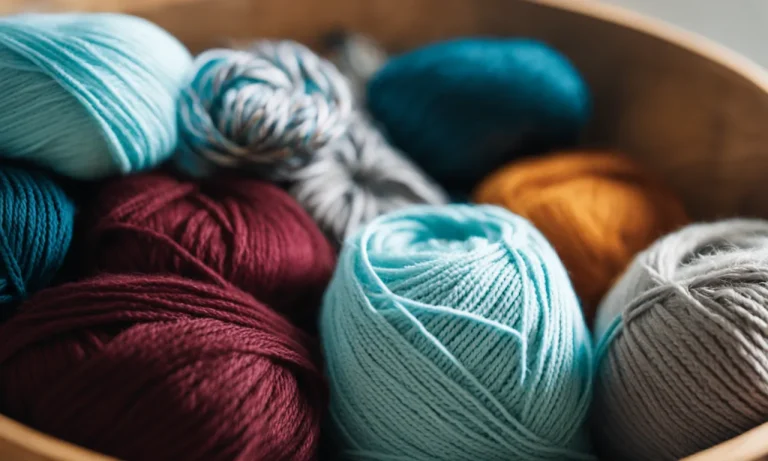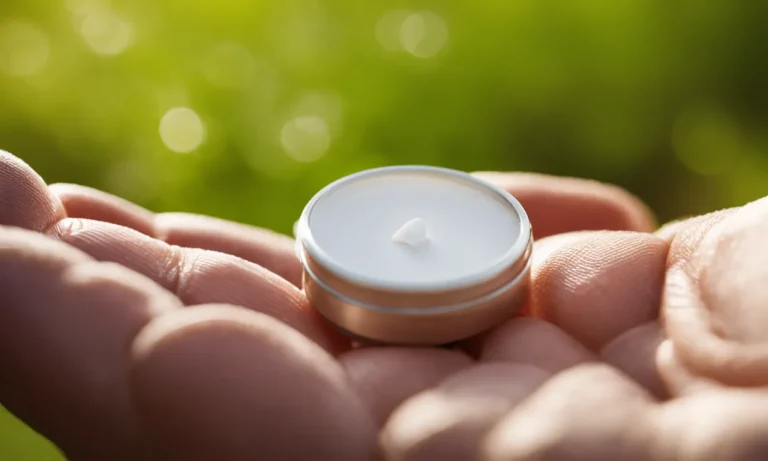Can You Dye Velvet Fabric? A Comprehensive Guide
Velvet is a delicate fabric that can seem intimidating to dye, but with the right techniques and dyes, you can totally transform the color of your velvet clothing, upholstery, and more. If you’re wondering if it’s possible to dye velvet at home, the answer is yes – with a bit of care and patience, you can dye velvet fabric any color you want.
If you’re short on time, here’s a quick answer: yes, you can successfully dye velvet fabric at home using special dyes formulated for velvet. Take care to thoroughly saturate the fabric and expect the dyeing process to take longer compared to other fabrics.
The Challenges of Dyeing Velvet
Dyeing velvet fabric can be a challenging task due to its unique characteristics. Velvet is a luxurious fabric known for its softness and rich texture. However, these very qualities that make it desirable also present challenges when it comes to dyeing.
The Thick Pile Can Resist Dye Absorption
One of the main challenges of dyeing velvet is its thick pile. The pile refers to the raised surface of the fabric, created by the closely woven fibers. While this gives velvet its characteristic plushness, it also means that dye absorption can be uneven.
The dense pile can resist penetration by the dye, resulting in patchy or uneven color distribution.
To overcome this challenge, it is important to use a dye specifically formulated for velvet fabric. These dyes are designed to penetrate the dense pile and ensure even coloration. Additionally, pre-treating the fabric with a dye fixative can help improve dye absorption and minimize patchiness.
The Fabric is Prone to Water Marks
Another challenge when dyeing velvet is the fabric’s tendency to develop water marks. Velvet is sensitive to water and can easily absorb moisture, which can leave behind unsightly marks or stains. This can be particularly problematic when dyeing, as the dyeing process often involves the use of water.
To prevent water marks, it is essential to take extra precautions when handling velvet during the dyeing process. Avoid soaking the fabric for prolonged periods and instead opt for a more controlled dye application method.
For example, using a brush or sponge to apply the dye directly to the fabric can help minimize water exposure and reduce the risk of water marks.
It is also advisable to conduct a patch test on a small, inconspicuous area of the fabric before dyeing the entire piece. This will help you assess how the fabric reacts to the dye and identify any potential issues, such as water marks, before proceeding with the dyeing process.
Choosing the Right Dye for Velvet
When it comes to dyeing velvet fabric, it’s important to choose the right type of dye to achieve the desired results. Here are three main types of dyes that are commonly used for dyeing velvet:
All-Purpose Fiber Reactive Dye
All-purpose fiber reactive dyes are a popular choice for dyeing velvet fabric. These dyes are known for their vibrant and long-lasting colors. They work well on natural fibers like cotton, silk, and rayon, which are commonly used to make velvet.
Fiber reactive dyes chemically bond with the fabric, resulting in color that won’t fade or wash out easily. They are available in a wide range of colors, allowing you to experiment and create unique shades on your velvet fabric.
Acid Dyes Specifically for Silk and Wool
If you’re working with silk or wool velvet, acid dyes are the way to go. These dyes are specially formulated to work with protein fibers like silk and wool. Acid dyes provide deep and intense colors that are both vibrant and long-lasting.
They require the use of an acid, such as vinegar or citric acid, to set the dye and ensure maximum color retention. Acid dyes are available in a variety of shades, giving you plenty of options to choose from when dyeing your silk or wool velvet.
Disperse Dyes for Synthetic Velvet
If you have synthetic velvet fabric made from fibers like polyester or nylon, disperse dyes are the best choice. Disperse dyes are designed to work specifically with synthetic fibers, allowing for excellent color penetration and adhesion.
These dyes can be used with heat, such as boiling water or a heat press, to ensure the dye is properly set. Disperse dyes offer a wide range of color options and are known for their ability to produce vibrant and long-lasting results on synthetic velvet fabric.
When choosing a dye for your velvet fabric, it’s essential to consider the type of fabric you’re working with and the desired outcome. Always follow the manufacturer’s instructions for best results, including any pre-treatments or post-dyeing steps.
Experimentation is key to finding the perfect dye and achieving the desired color on your velvet fabric.
Preparing the Velvet for Dyeing
Before you begin the process of dyeing velvet fabric, it is important to properly prepare the fabric to ensure the best results. Here are some steps you can follow:
Wash the Fabric
The first step in preparing velvet fabric for dyeing is to wash it. This removes any dirt, oils, or other substances that may be present on the fabric. You can wash the fabric by hand or using a gentle cycle in the washing machine.
Make sure to use a mild detergent and avoid using bleach or any harsh chemicals that could damage the fabric.
Use Vinegar as a Fixative
Vinegar can be used as a fixative for velvet fabric before dyeing. A fixative helps the dye to adhere to the fabric and prevents it from fading or bleeding. To use vinegar as a fixative, mix one part vinegar with four parts water and soak the fabric in this solution for about an hour.
After soaking, rinse the fabric thoroughly to remove any excess vinegar.
Wet the Fabric Thoroughly Before Dyeing
Before applying the dye, it is important to wet the fabric thoroughly. This helps the dye to spread evenly and ensures that the color penetrates the fabric properly. You can wet the fabric by submerging it in a basin of water or using a spray bottle to dampen it.
Make sure the fabric is evenly wet before proceeding to the dyeing step.
By following these preparation steps, you can ensure that your velvet fabric is ready for dyeing and achieve the best results. Remember to always follow the instructions provided with the dye you are using and conduct a patch test on a small area of the fabric before dyeing the entire piece.
Dyeing Velvet with Fiber Reactive Dye
Mix the Dye
To dye velvet fabric, you will need fiber reactive dye, which is specifically designed to bond with the fibers of the fabric. Start by selecting a high-quality fiber reactive dye in the color of your choice. Follow the instructions on the dye package to mix the dye solution.
In most cases, you will need to dissolve the dye powder in warm water and add a fixative solution to ensure the color stays vibrant.
Submerge and Agitate the Fabric
Once the dye is properly mixed, it’s time to submerge the velvet fabric. Fill a large container, such as a bucket or a sink, with warm water. Add the dye solution to the water and stir well to ensure even distribution.
Carefully place the velvet fabric into the dye bath, making sure it is fully submerged. Use your hands or a long spoon to agitate the fabric gently, ensuring that the dye penetrates all the fibers evenly. This agitation will help to achieve a uniform color result.
Rinse Thoroughly
After the fabric has soaked in the dye bath for the recommended amount of time (usually specified on the dye package), it’s time to rinse out the excess dye. Fill a clean sink or basin with cold water and add a small amount of mild detergent.
Gently swish the fabric in the soapy water to remove any remaining dye particles. Rinse it thoroughly with cold water until the water runs clear.
Additional Tips for Even Results
For best results when dyeing velvet fabric, consider the following tips:
- Pre-wash the fabric: It’s essential to pre-wash the velvet fabric to remove any dirt, oils, or finishes that may interfere with the dye absorption. Follow the fabric’s care instructions for the best pre-washing method.
- Test a swatch: Before dyeing the entire fabric, it’s advisable to test a small swatch to ensure you achieve the desired color and that the dye reacts well with the fabric.
- Use a dye fixative: Adding a dye fixative to the dye bath helps to enhance the color’s vibrancy and improve its wash-fastness.
- Follow the dye manufacturer’s instructions: Different dye brands may have specific instructions for dyeing velvet fabric. Always refer to the dye manufacturer’s instructions for the best results.
By following these steps and tips, you can successfully dye velvet fabric using fiber reactive dye, transforming it into a beautiful, custom-colored piece for your home or wardrobe.
Dyeing Velvet with Acid or Disperse Dyes
Use a Pot or Bucket for Dyeing
When dyeing velvet fabric, it is important to choose the right type of dye. Acid dyes and disperse dyes are commonly used for dyeing velvet. Acid dyes work best on natural fibers like silk and wool, while disperse dyes are suitable for synthetic fibers like polyester.
Before dyeing, prepare a pot or bucket that is large enough to accommodate the fabric. Make sure the container is clean and free from any residue that could affect the dyeing process.
Stir Frequently During Dyeing
Once you have prepared the dye bath, carefully place the velvet fabric into the pot or bucket. It is important to stir the fabric frequently during the dyeing process to ensure even color distribution. This will prevent any uneven patches or streaks from forming on the fabric.
Gently agitate the fabric in the dye bath using a wooden spoon or a gloved hand to ensure that the dye reaches every part of the fabric.
Rinse in Cool Water
After the fabric has been dyed to the desired color, it is time to rinse out any excess dye. Fill a basin or sink with cool water and gently submerge the fabric. Rinse it thoroughly until the water runs clear. Avoid using hot water, as it can cause the dye to bleed and result in uneven coloration.
Once the fabric is rinsed, gently squeeze out the excess water without wringing or twisting the fabric, as this can damage the velvet pile.
Steam to Set the Dye
To ensure the dye is properly set and will not fade or wash out, steam the dyed velvet fabric. Place the fabric in a steamer or hang it above a pot of boiling water. The steam will penetrate the fibers of the fabric and help set the dye.
Steam for about 30 minutes to an hour, depending on the fabric and dye used. After steaming, allow the fabric to cool and dry completely before using or washing it.
It is important to note that dyeing velvet fabric can be a delicate process, and it is recommended to follow the dye manufacturer’s instructions and test the dye on a small, inconspicuous area of the fabric before dyeing the entire piece.
Additionally, for more detailed guidance, you can visit www.ritdye.com or www.dharmatrading.com for comprehensive tutorials and tips on dyeing velvet fabric.
Conclusion
With some preparation and care, you can successfully dye velvet fabrics at home using dye specially formulated for velvet. Fiber reactive, acid, and disperse dyes all work well depending on the velvet fabric composition.
Take your time to fully saturate the velvet, agitate it frequently as it soaks in the dye bath, and rinse thoroughly after dyeing. With the right techniques, you can give your velvet clothing, upholstery and accessories a vibrant new look and color.







